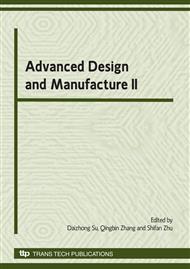p.353
p.357
p.361
p.365
p.369
p.373
p.377
p.381
p.385
A Regression Neural Model for In-Process Surface Roughness Monitoring in End Milling Operations
Abstract:
The key element of the in-process surface roughness monitoring system is the decision-making model, which is utilized to analyze the input factors and then to generate a proper output. The success of the in-process monitoring system depends on the accuracy of the decision-making model. To increase the accuracy and reliability of model, it is important to reduce the variation of the inputs. To achieve this objective, an integration of regression and neural network was developed as a decision-making model in this research. In this integrated model, the regression model was applied as a filter to sort the input variables into groups. Furthermore, the grouped data was implemented to train and to generate different neural networks models to reduce the affection of input variation and increase the accuracy of the monitoring system. The input variables was first filtered by the threshold of regression model, and then analyzed by different neural networks model based on the filtered result. Finally, to evaluate the performance of the integrated model, the regression neural network and traditional neural networks were both developed for surface roughness monitoring system in an end milling operation to compare the accuracy of systems.
Info:
Periodical:
Pages:
369-372
Citation:
Online since:
October 2009
Authors:
Price:
Сopyright:
© 2010 Trans Tech Publications Ltd. All Rights Reserved
Share:
Citation:


